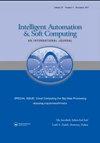二维四次非自治微分方程的周期解
IF 2
4区 计算机科学
Q2 Computer Science
引用次数: 0
摘要
本文计算了四次微分方程周期解的最大可能数。在这方面,我们在文献中首次开发了新的公式来确定四次方程大于8的周期解的最大个数。为了得到周期解的最大个数,我们采用了系统的分岔分析方法。我们使用计算机代数Maple 18来解决出现在作为积分的焦点值公式中的冗长计算。将新开发的公式应用于具有不同程度的代数和齐次三角系数的各种多项式。我们能够通过使用代数系数获得类C4,1的最大多重性9来验证我们新开发的公式。而C4、4类周期解的最大个数;C5 1;C5 5;C6, 1;C6:6;C7 1等于8。此外,还简要讨论了上述代数系数类极限环的稳定性。因此,我们从上述事实得出结论,我们的新结果是可信的,真实的和令人愉快的文献补充。本文章由计算机程序翻译,如有差异,请以英文原文为准。
Periodic Solutions for Two Dimensional Quartic Non-Autonomous Differential Equation
In this article, the maximum possible numbers of periodic solutions for the quartic differential equation are calculated. In this regard, for the first time in the literature, we developed new formulae to determine the maximum number of periodic solutions greater than eight for the quartic equation. To obtain the maximum number of periodic solutions, we used a systematic procedure of bifurcation analysis. We used computer algebra Maple 18 to solve lengthy calculations that appeared in the formulae of focal values as integrations. The newly developed formulae were applied to a variety of polynomials with algebraic and homogeneous trigonometric coefficients of various degrees. We were able to validate our newly developed formulae by obtaining maximum multiplicity nine in the class C4,1 using algebraic coefficients. Whereas the maximum number of periodic solutions for the classes C4,4; C5,1; C5,5; C6,1; C6:6; C7,1 is eight. Additionally, the stability of limit cycles belonging to the aforementioned classes with algebraic coefficients is briefly discussed. Hence, we conclude from the above-stated facts that our new results are a credible, authentic and pleasant addition to the literature.
求助全文
通过发布文献求助,成功后即可免费获取论文全文。
去求助
来源期刊

Intelligent Automation and Soft Computing
工程技术-计算机:人工智能
CiteScore
3.50
自引率
10.00%
发文量
429
审稿时长
10.8 months
期刊介绍:
An International Journal seeks to provide a common forum for the dissemination of accurate results about the world of intelligent automation, artificial intelligence, computer science, control, intelligent data science, modeling and systems engineering. It is intended that the articles published in the journal will encompass both the short and the long term effects of soft computing and other related fields such as robotics, control, computer, vision, speech recognition, pattern recognition, data mining, big data, data analytics, machine intelligence, cyber security and deep learning. It further hopes it will address the existing and emerging relationships between automation, systems engineering, system of systems engineering and soft computing. The journal will publish original and survey papers on artificial intelligence, intelligent automation and computer engineering with an emphasis on current and potential applications of soft computing. It will have a broad interest in all engineering disciplines, computer science, and related technological fields such as medicine, biology operations research, technology management, agriculture and information technology.
 求助内容:
求助内容: 应助结果提醒方式:
应助结果提醒方式:


